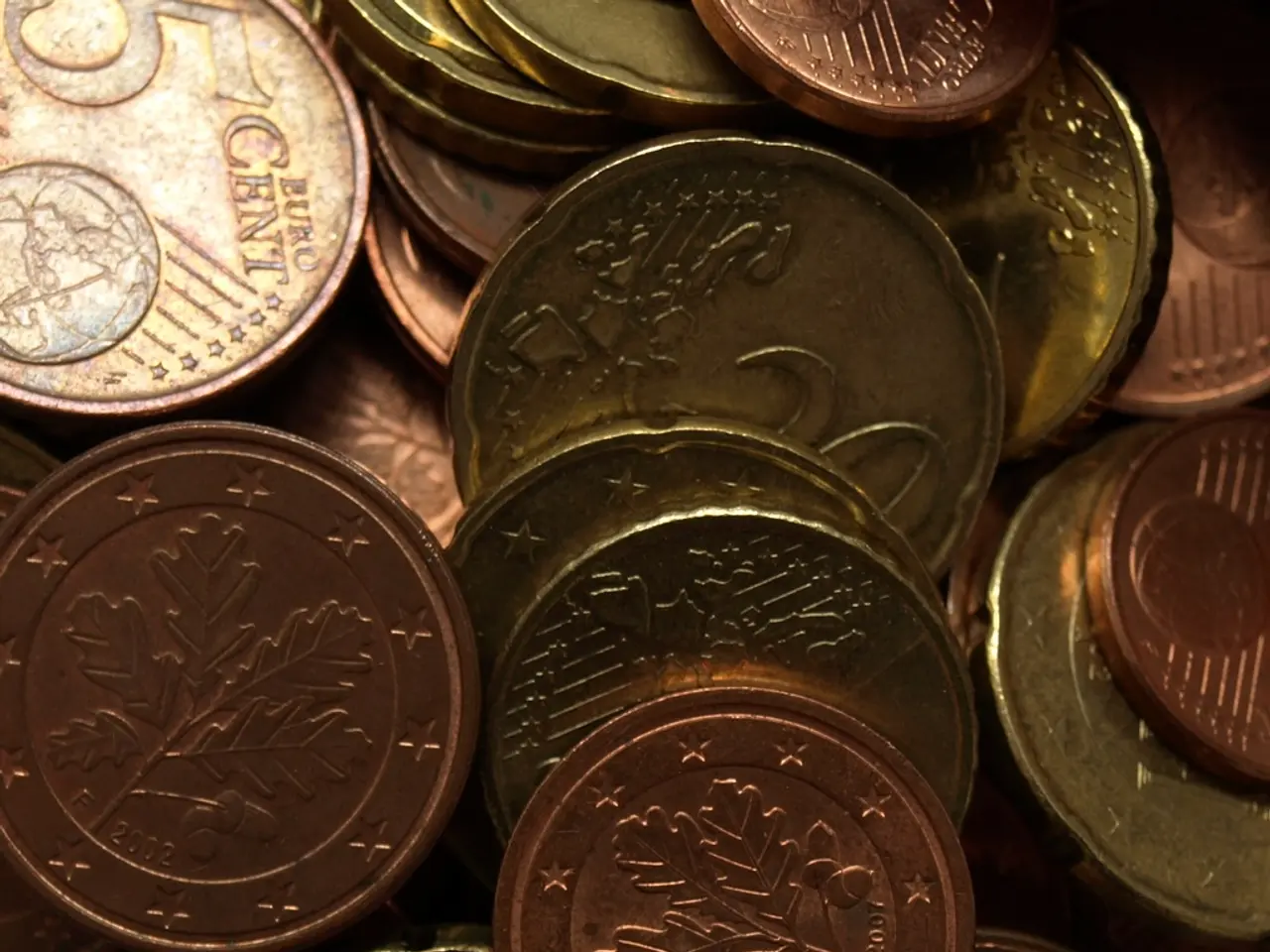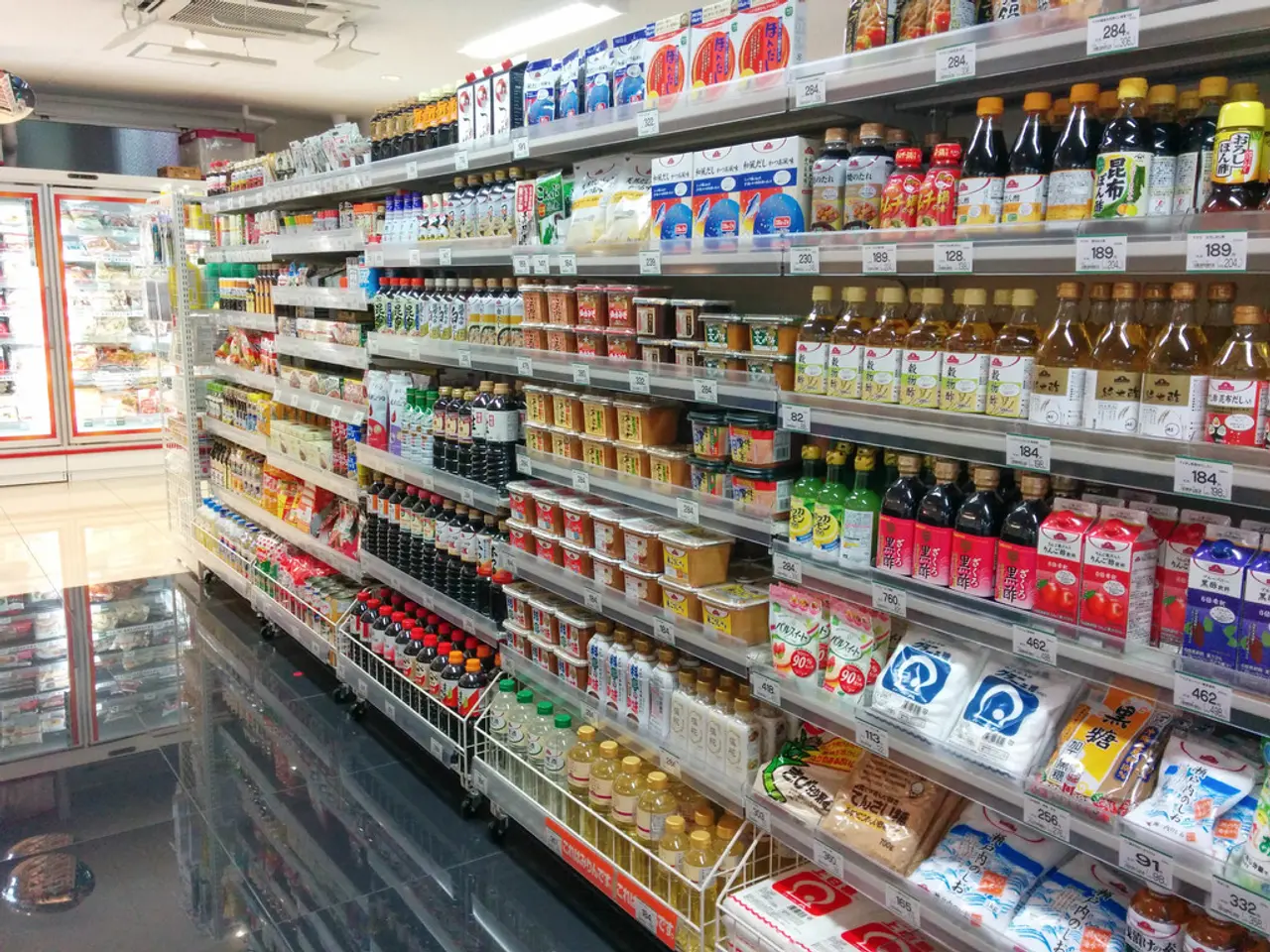Stablecoins Question Visa's Dominance Over Cash Transactions
In the rapidly evolving world of digital payments, Visa finds itself at the forefront of a new development: stablecoins. These cryptocurrencies, pegged to fiat currencies like the U.S. dollar, are gaining traction among merchants as a potential means to bypass the 2%-3% transaction fees charged by Visa and banking partners.
Recent legislative changes in the U.S. have brought regulatory clarity to stablecoins, enabling merchants to accept them legally. However, this development has caused some concern among investors, leading to a 5% decline in Visa's stock. The fear is that stablecoins could pose a threat to traditional payment networks like Visa.
One of the primary attractions of stablecoins for merchants is the potential for significant cost savings. By adopting stablecoins, merchants could potentially save billions of dollars annually that would otherwise go to Visa and banking partners. Moreover, some merchants are even considering issuing their own stablecoins under federal oversight, a move that could further disrupt traditional payment processors.
However, Visa is not taking this challenge lying down. The company sees stablecoins as a growth opportunity, particularly in underserved markets. For instance, stablecoins can provide access to U.S. dollars for those who lack it locally, offer a solution for regions with volatile local fiat currencies, and streamline cross-border payments like remittances and B2B transactions—areas where Visa's existing infrastructure falls short.
Visa is actively integrating stablecoins into its ecosystem. The company has made strategic investments in stablecoin technology and partnerships, such as its $200 million investment in the USD Coin (USDC) pilot and collaborations with firms like Coinbase, Monad, and World Network. Initiatives like real-time settlement pilots using USDC on blockchain platforms aim to reduce transaction costs and friction in global payments, bolstering Visa's relevance in the decentralized finance (DeFi) sector.
The recently passed GENIUS Act provides a regulatory framework for stablecoins, allowing Visa to deploy its payment credentials and tokens to connect stablecoin platforms to fiat currency networks. This enables native stablecoin settlement and enables programmable money solutions. These efforts position Visa to grow by incorporating stablecoins rather than being displaced by them.
Despite the challenges posed by stablecoins, it's worth noting that replicating Visa's network effect—acceptance in virtually every country by 150 million merchants and 4.8 billion total cards in circulation—is nearly impossible. Consumers also prioritize the perks of credit cards, such as cash-back bonuses, and are unlikely to switch simply because of stablecoins.
In conclusion, while stablecoin legislation and increasing merchant acceptance introduce competitive pressures that could reduce Visa's transaction fee revenues, particularly from credit card payments, Visa is proactively leveraging stablecoins to enhance and expand its payments ecosystem. Its extensive global network and ongoing investments in stablecoin technology and partnerships aim to secure its leadership in the evolving digital payment landscape rather than lose ground to new crypto-based alternatives.
- To combat the potential threat, Visa is viewing stablecoins as a growth opportunity, particularly in underserved markets where traditional payment networks may fall short.
- In the decentralized finance (DeFi) sector, Visa is making strategic investments in stablecoin technology and partnerships, such as its $200 million investment in the USD Coin (USDC) pilot and collaborations with firms like Coinbase, Monad, and World Network.
- With the recently passed GENIUS Act providing a regulatory framework, Visa is deploying its payment credentials and tokens to connect stablecoin platforms to fiat currency networks, aiming to grow by incorporating stablecoins rather than being displaced by them.




